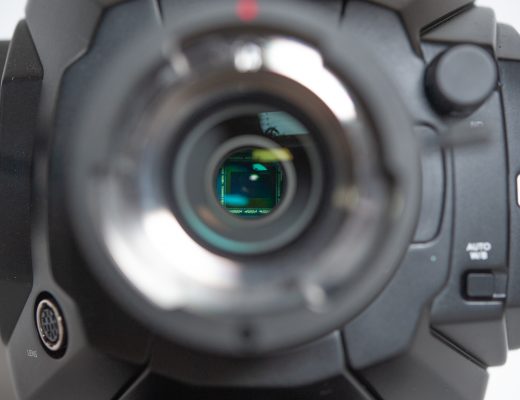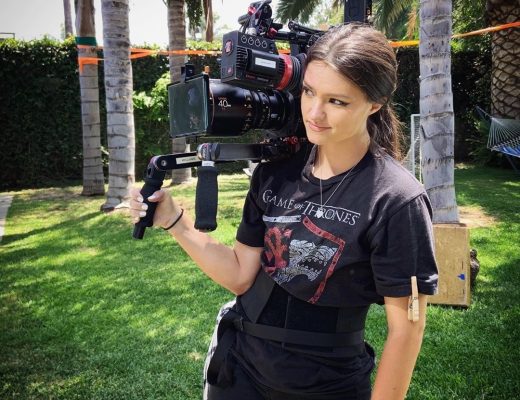With hundreds of jobs and opportunities, breaking into the entertainment industry can be a unique experience for anyone who decides to try to make a career as a filmmaker. From pitching an idea, casting, shooting, editing and screening there are countless ways to be involved in the creative process. This week we had a chance to speak with James McKenzie who is a Director of Photography within the commercial production world. This is what he said:

What is your name and where are you from?
James McKenzie: My name is James McKenzie. I grew up in Iowa but I’ve been in St. Louis for almost 15 years now.
What is your primary role on set?
JM: Director of Photography
How did you break into the industry?
JM: My formal education is in stills photography, and I started off as a photojournalist. As that industry was beginning to die a gruesome death, I started working with commercial photographers and eventually landed a full-time job at Bruton Stroube Studios. Meanwhile, I was toying with video and frustrated with the gear and the workflow. Just a year or so later, the Canon DSLR that was our workhorse still camera gained impressive video capability and the studio made the decision to jump into the Motion business with both feet.
Tim Wilson came on board as our director and department head, and I started working as his camera operator and helping with some of the post work. As I got more comfortable with the process and designing lighting, I took on more responsibility as a DP. Fast forward the better part of a decade and most of our productions are on the scale of 20-30 crew as opposed to the 2-3 when we started.
Who is a person in the industry that is on top of his or her game in your role?
JM: It’s interesting to watch the visual trends between commercials and features— looks that used to only be reserved for big-budget movies are making their way into smaller commercials. Commercials are decreasingly poppy and slick, they’re taking on the more modeled tones and moodier lighting of my favorite films. I’ve been following Matthias Koenigswieser for several years and have loved the cinematic tone he’s brought to his commercial work. Now, of course, he’s getting to put that aesthetic to work on features, and they’re gorgeous. I’m also a huge fan of Greig Fraser— he’s proven you can get a ton of mileage out of a small kit (Lion), but that sensibility can scale to huge features as well.
What has been the coolest project to work on?
JM: One of my all-time favorites was last year on the Spectracide campaign. It was kind of a culmination of a lot of the skills and techniques I’d been focused on for several years— trying to maintain consistent naturalistic lighting, high speed shooting, some good macro nuggets, and using unique camera movement to enhance drama. Working with the Bolt motion control system was kind of the cherry on top for me. I loved the creative, the performance, and we got to pull out all the stops from production through post. Just a super fun experience all around.
Spectracide Commercial:
https://www.youtube.com/watch?v=U8DwK7bta1c
If you had to impress someone with your work, what would be the most “well-known” content that you’ve worked on?
JM: One of the more prominent pieces is probably a mini-documentary called “The Road Through Warroad” we shot a couple years ago about hockey in Warroad, Minnesota. It started as a really unique opportunity to do some cool branded content for Enterprise, but after our first production and edit, the clients decided it was a good enough story to buy off on a 30-minute special to air on NBC Sports. So we went back for another round of interviews and coverage to flesh out a full half hour piece.

What is the first thing you do on set?
JM: I like to take a walk around and kind of step through the shots one more time. Most of our work is on location, so I often will just walk around with the boards one more time to line up shots and talk through things with the director. It gives me one last check that we’re on the same page.
Best craft service food?
JM: I have to say, we do pretty well here in STL, but I was certainly impressed to see avocado toast brought out on set when we were in Atlanta shooting this past fall.
What is your current TV obsession?
JM: I’m kind of obsessed with not watching TV anymore. I don’t know the last time I’ve watched actual, live TV. BUT that’s kind of splitting hairs. I do watch a ton of series programming. I’m really digging the new True Detective and am re-watching all of Game of Thrones before the final season. Maniac was pretty great too.
Do you binge-watch shows or pace them out?
JM: Usually one episode a day is my max binge rate. There are a handful of HBO shows I keep up with week-to-week when they’re in season. I don’t know the last time I fully binged a series over a weekend though.
What film that you recently watched resonated with you?
JM: I watched most of the Oscar best pic nominees this year. Roma blew me away. I really was impressed with Lady Gaga in A Star is Born as well. One of my favorites this year was Hearts Beat Loud— I love the more intimate scale of that kind of movie, and Nick Offerman’s giggle is one of the best things on film this year.
What piece of gear do you have your eye on?
JM: I’m primarily a RED shooter, so I’m really digging all of the convergence of peripherals to that ecosystem. The RT Motion ACI has my attention currently. I probably salivate the most over glass though.
Camera – should you rent or own?
JM: I don’t think there’s ONE true way. For my studio, the general rule of thumb is that if I’m renting it enough that I could pay off a purchase in 2 years, it’s probably worth buying it. That goes for accessories and support, but the cameras themselves as well.
Lenses – should you rent or own?
JM: I would love to own but I’d want to have like a dozen sets of glass. I think lensing is the probably quickest way to make the biggest difference in the look of an image, and each look should be tailored to the project. Renting is really the only reasonable way to be able to do that
What is your preferred camera system?
JM: RED Helium currently. I love the look of the Arri cameras, don’t get me wrong. But I constantly leverage the modularity and flexibility offered in the RED system.

What has been the biggest challenge in your career?
JM: It was a big shift to feel comfortable calling myself a Director of Photography as opposed to an operator or technician. The biggest hurdle was starting to feel ownership of the look of the image in terms of controlling lighting and being able to create (or sometimes just augment) the look or mood to fit a shot or scene.
What advice do you have for someone starting out in the industry?
JM: Hire people more experienced and talented than you. And choose the right times to be honest about needing help. You can learn a ton on the low that way. And if you’ve hired a good gaffer, they will be happy to offer suggestions when you’re stuck. On top of that, they’ll feel more involved as a collaborator; everyone works harder when they feel like they’re truly contributing to the process, and the work is better for it.
Where do you hope your career takes you in 5 years? 10 years?
JM: I do think our work as a studio is moving in a great direction. I love it when we have a strong concept to execute and we get to really dig in and bring it to life. It’s incredibly satisfying to have a picture in your head and be able to put all the pieces together and then see that exact picture on the screen. I’d love to extend that into some longer form work as well; one of the things I really like to dig into is lighting an entire scene instead of just lighting for a single shot. Getting to really dial in a scene is something that is fairly rare in 30-second commercials. I’d love to be in a position where we could pace our schedule out a little more to work on fewer, but more toothsome projects.
Where can people see your work?
JM: We just relaunched our website:
Where can people follow you on social?
JM: @greatbignerd — I’m most active on Instagram
What to be Featured on Filmmaker Friday?
If you do, message Filmtools on Instagram or tag us on Facebook, Instagram and Twitter!

Filmtools
Filmmakers go-to destination for pre-production, production & post production equipment!
Shop Now













